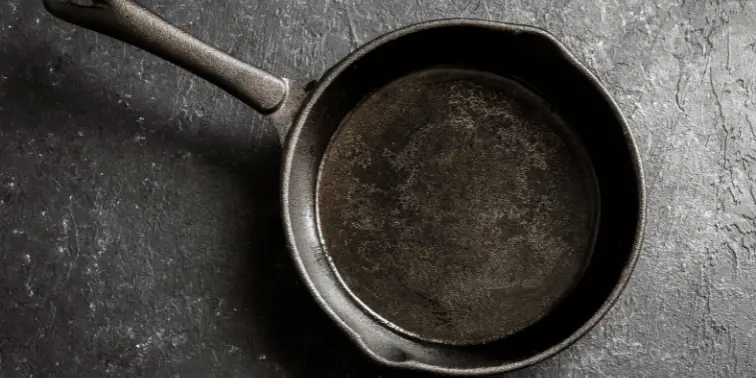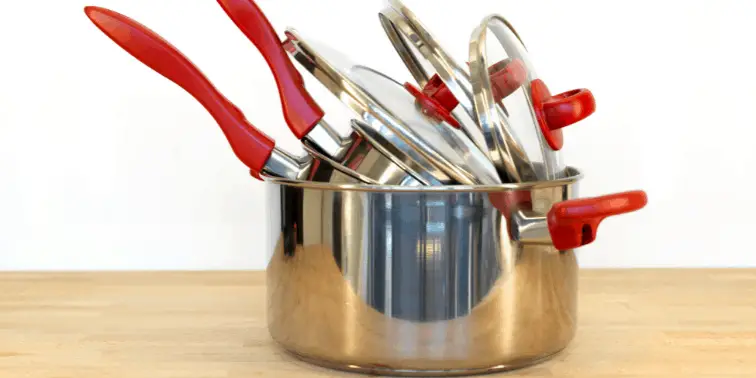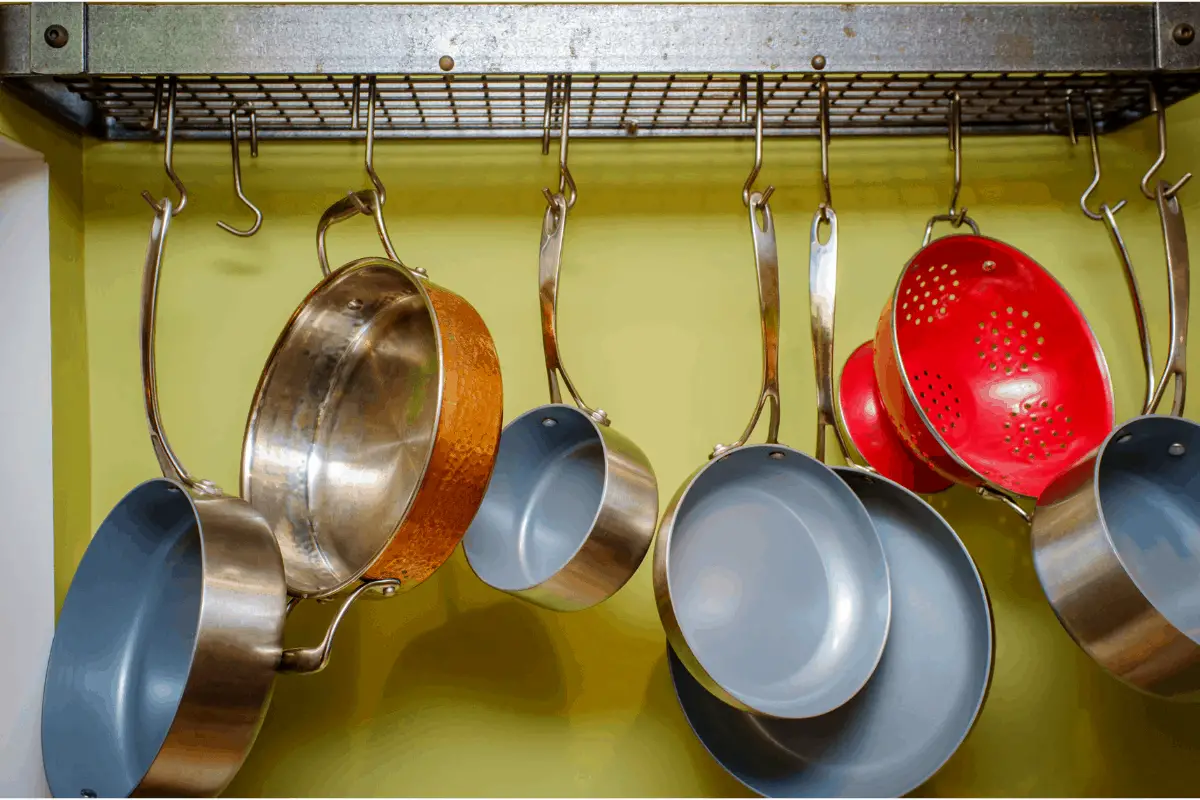Perhaps the most important thing to consider when packing pots and pans for moving is knowing which box they’re in when unpacking your household stuff at the new place. Unless you’re planning to eat in restaurants for a while or eat take-out, you will need at least a few pots and pans soon after you arrive.
Depending on your home cooking needs and style, you might have a varied selection of cooking vessels with various materials and designs. Or, you might have a fully matching—and augmentable—set. Whatever the cookware in your kitchen, when it’s time to move, you must sell or give pieces away, or else know how to pack your pots and pans for moving.
While it might seem unlikely that pots and pans could be damaged during your move, the possibility does exist. So I’ll tell you about the best ways to pack them to arrive intact. After all, buying new ones might not be your priority right after a move.
Table of Contents
Materials Used in Cookware
Although nearly all pots and pans are made from metal, there are some variations among the different metals that we think you should know about. So let’s look at the different types and why they matter for packing and moving.
Non-Coated Pots and Pans
- Stainless Steel: Durable and popular, this metal will stand up to a lot of wear and tear. But be careful of handles made of another material that is screwed or riveted on.
- Carbon Steel: Often used to reduce the weight of car parts, carbon steel is also great for cookware. Not only is it lightweight, but it’s also quite hard to dent or scratch.
- Aluminum: Less expensive than steel, aluminum cookware is also less durable and can dent. To keep it from corroding (anodizing), many manufacturers encase it with other metals or non-stick coating.
- Copper: Copper’s heat-retention properties make it suitable for the core of stainless steel cookware. However, by itself, copper has problems with tarnishing and denting. And it costs a pretty “copper penny” to replace.

- Cast Iron: A lot of this workhorse of cookware is handed down from one generation to the next—better than new because of how well seasoned it is. Just know that, although you can’t destroy this cookware, it is extremely heavy (8 lbs. for a 12” skillet).
- And Sometimes Glass: Glass is more commonly used in baking pans and casseroles, although you do see some glass saucepans as well. As we all know, glass chips and breaks fairly easily, so pack it with care.
Keep in mind that several of these materials have properties like corrosion (non-anodized aluminum and non-coated cast iron) or a tendency to shatter (glass cookware). So be sure to put them in protective wrappings (e.g., heavy plastic bags) or separate, sealed boxes to protect other items.
Coated and Non-Stick Pots and Pans
Enamel
Often, cast iron cookware is coated in porcelain, giving it certain non-stick qualities. Like any porcelain, though, it can chip and scratch.
Non-Stick
The best natural non-stick coating is probably carbon steel. However, it doesn’t compare with silicone-type coatings like Teflon when it comes to food “just sliding off” the pan. Still, besides the worry about toxicity, non-stick cookware will be useless after a few years due to scratching and scraping off stuck-on food. Some brands are better than others for retaining their coating.
Considerations when Packing Pots and Pans for Moving
When done right, packing pots and pans for moving can facilitate the overall packing process. However, doing it right means planning before you pack.
Selecting Moving Box Sizes
Knowing that some pots and pans are heavier than others, it’s a good idea to use smaller-sized boxes for those that weigh more. Otherwise, not only will the box be a heavy lift, but it also might not be able to support all the weight.
For example, a glass casserole should travel in a smaller box that’s heavily padded and otherwise filled with lightweight items like oven mitts or even socks inside. On the other hand, a medium-sized box could work well for cookware like aluminum pots and pans—which are not all that heavy.
Preparing the Moving Boxes
First, make sure that all the pots and pans you’re packing are clean. Then, line the bottom of each box with slightly scrunched-up plain newsprint or brown paper in the bottom of the moving box. Don’t scrunch the paper into tight balls, but rather let it spread out on the bottom and prevent items from shifting during the move.
Also, consider distributing the total weight across various boxes by packing one large or a few smaller pots and pans at the bottom of a moving box, where they are least likely to damage other items. Then, add lighter items from your household on top.
Be wise (and mindful of those moving the box) and aim for a total box weight of 34 to 45 lbs., at most.
Protecting the Surfaces of Pots and Pans
If these are non-stick-coated, be sure to wrap them in a non-scratching fabric like fleece or an old blanket stitched loosely to create pan-sized envelopes. You can reuse the latter at home, and it keeps other items in the moving box from touching the delicate surface. Bubble wrap works too. Hopefully, you’ll be able to use that again too.
Nesting the Pots and Pans

For the most efficient use of space, stack the pots and pans in groups of three, nesting smaller pots inside larger ones. There might be room to add a few small kitchen gadgets in the topmost Bessel. Lids can be wrapped and packed separately.
Wrap glass lids and other fragile or breakable pieces with packing paper and encase them in dish towels (or other linens). Then, ensure the spaces between the stacked pots or pans are padded with plenty of additional cloths and surrounded by scrunched-up paper, compacted only slightly, throughout the box.
Can Smaller Items Go Inside Pots and Pans?
Yes, it’s OK to place small items (e.g., spice jars or unopened condiment containers) inside larger cooking vessels to save space. But be certain that each small item is packed in protective paper or cloth and surrounded by even more buffering material. You don’t want the small items to break and damage the insides of your pots and pans. Not to mention all the broken glass!
Seal and Label the Boxes and Get Moving
Once you reach your destination, you’ll be thankful you labeled the boxes, especially those containing pots and pans. If you’re tired after a day of moving and don’t want to eat in a restaurant—even for take-out—just go to a nearby convenience store and grab some canned food to heat on the stove. And in one of your pans. Maybe get some bread and lunch meat too.
There’s no feeling like relaxing in a new house after a day of unloading a moving truck. And if you do as we just suggested, you’ll realize, as never before, that cookware is one of the things that makes a new house into a home.
So whether it’s a hand-me-down iron skillet from Grandma or the spiffiest new non-stick cookware, you’ll always have pots and pans to count on.

